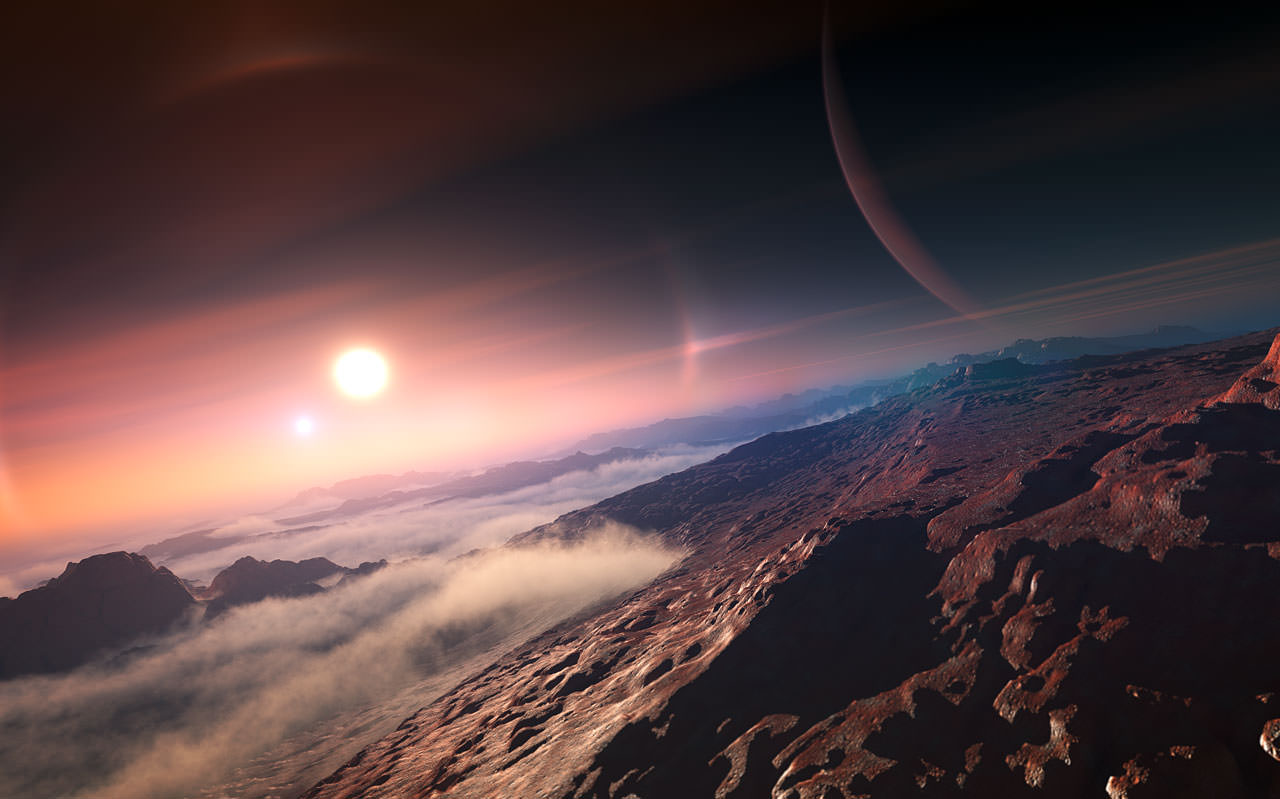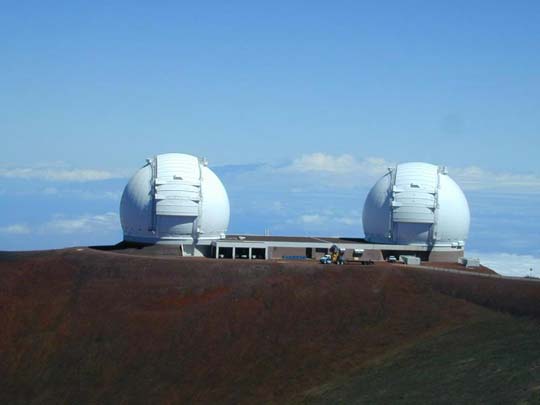[/caption]
There are two Keck telescopes – Keck I and Keck II; together they make up the W.M. Keck Observatory, though strictly speaking the observatory is a great deal more than just the telescopes (there’s all the instrumentation, especially the interferometer, the staff, support facilities, etc, etc, etc.).
William Myron Keck (1880-1964) established a philanthropic foundation in 1954, to support scientific discoveries and new technologies. One project funded was the first Keck telescope, which was quite revolutionary at the time. Not only was it the largest optical telescope (and it still is) – it’s 10 meters in diameter – but is made up of 36 hexagonal segments, the manufacture of which required several breakthroughs … and all 36 are kept in line by a system of sensors and actuators which adjusts their position twice a second. Keck I saw first light in 1993. Like nearly all modern, large optical telescopes, the Keck telescopes are alt-azimuth. Fun fact: to keep the telescope at an optimal working temperature – no cool-down period during the evening – giant aircons work flat out during the day.
The Keck telescopes are on the summit of Hawaii’s Mauna Kea, where the air is nearly always clear, dry, and not turbulent (the seeing is, routinely, below 1″); an ideal site for not only optical astronomy, but also infrared.
The second Keck telescope – Keck II – saw first light in 1996, but its real day of glory came in 1999, when one of the first adaptive optics (AO) systems was installed on it (the first installed on a large telescope).
2004 saw another first for the Keck telescope – a laser guide star AO system, which gives the Keck telescopes a resolution at least as good as the Hubble Space Telescope’s (in the infrared)!
And in 2005 the two Keck telescopes operated together, as an interferometer; yet another first.
To learn more, I suggest that you start with the official W.M. Keck Observatory website! Revolution in Telescope Design Debuts at Keck After Birth Here is a 1992 Lawrence Berkeley Lab article which captures some the excitement of those early days; and The Keck Telescopes viewed from the North puts the Keck telescopes in the Mauna Kea context.
Universe Today has covered the Keck telescopes, many times, in many different ways; for example, Keck Uses Adaptive Optics for the First Time, Binary Icy Asteroid in Jupiter’s Orbit, and New Technique Finds Farthest Supernovae.
Astronomy Cast has a couple of episodes on the Keck telescopes; check them out! The Rise of the Supertelescopes, and Adaptive Optics.






